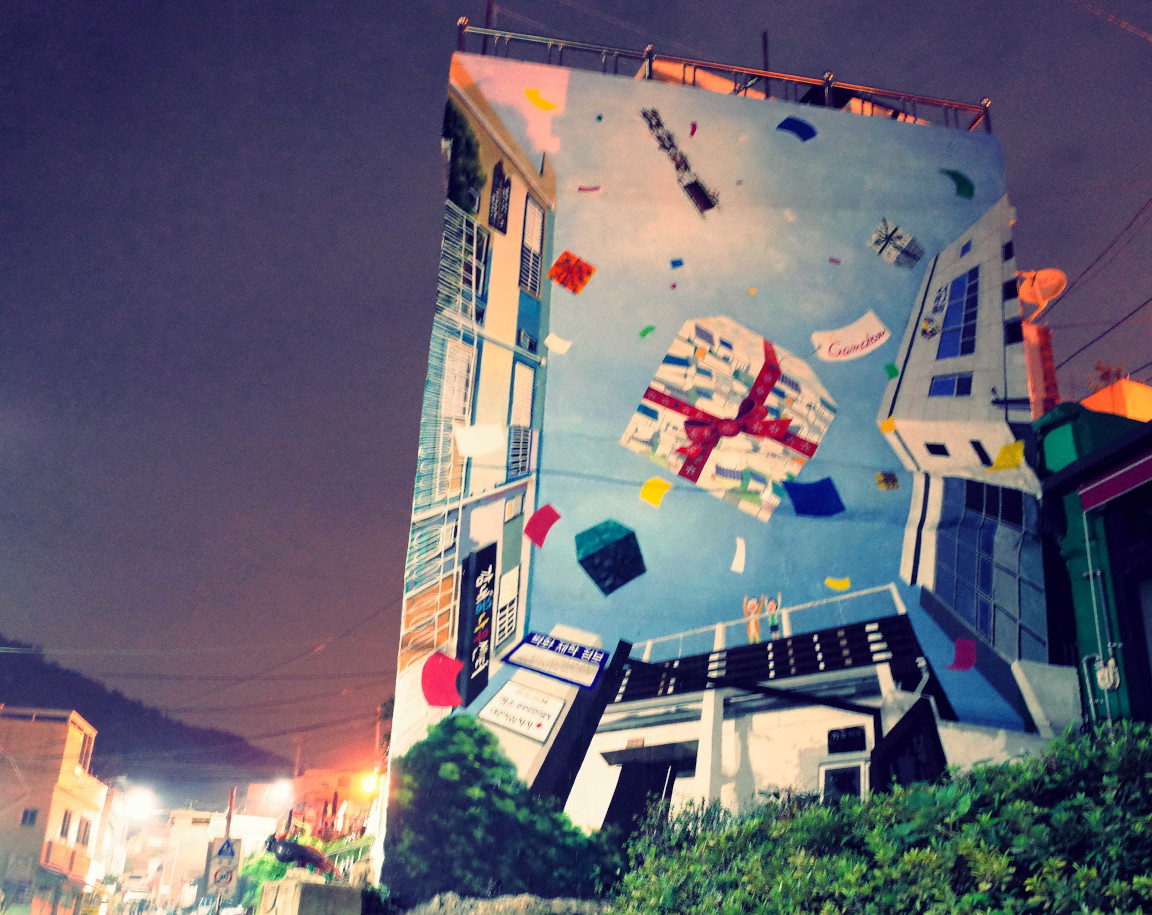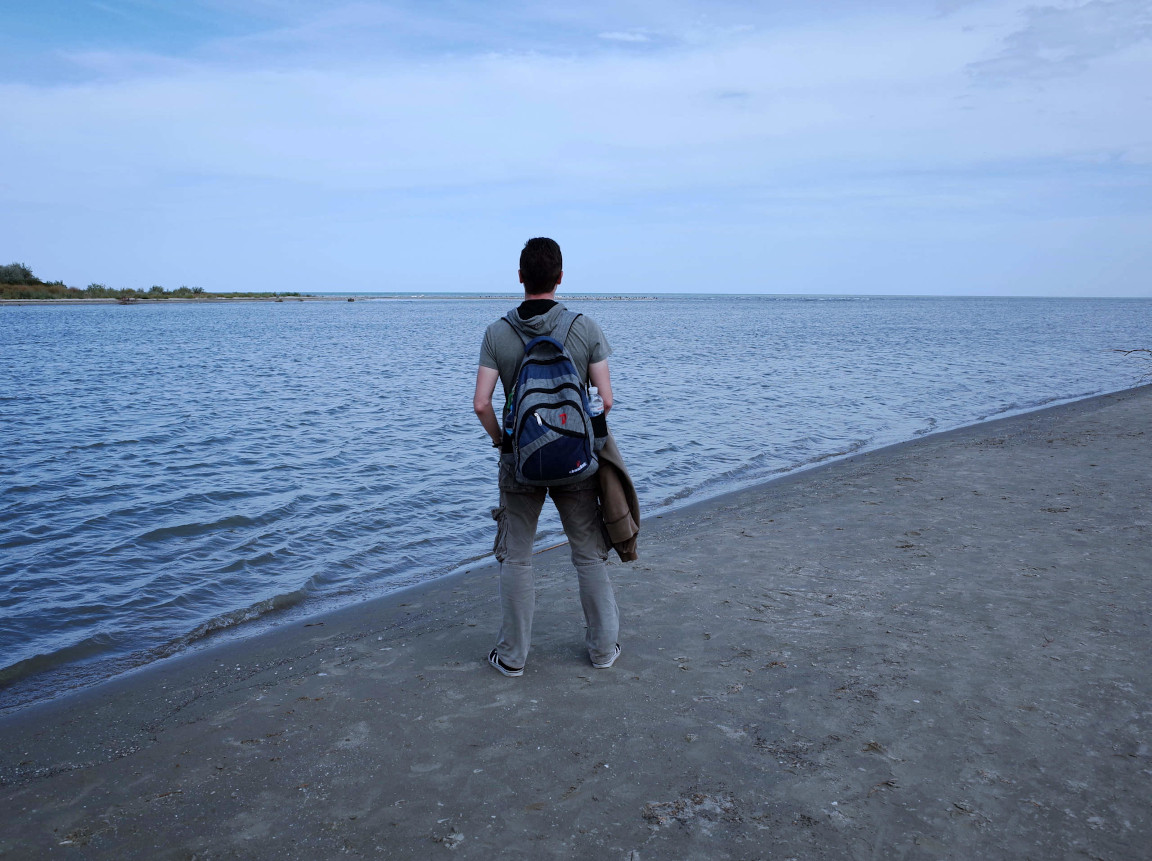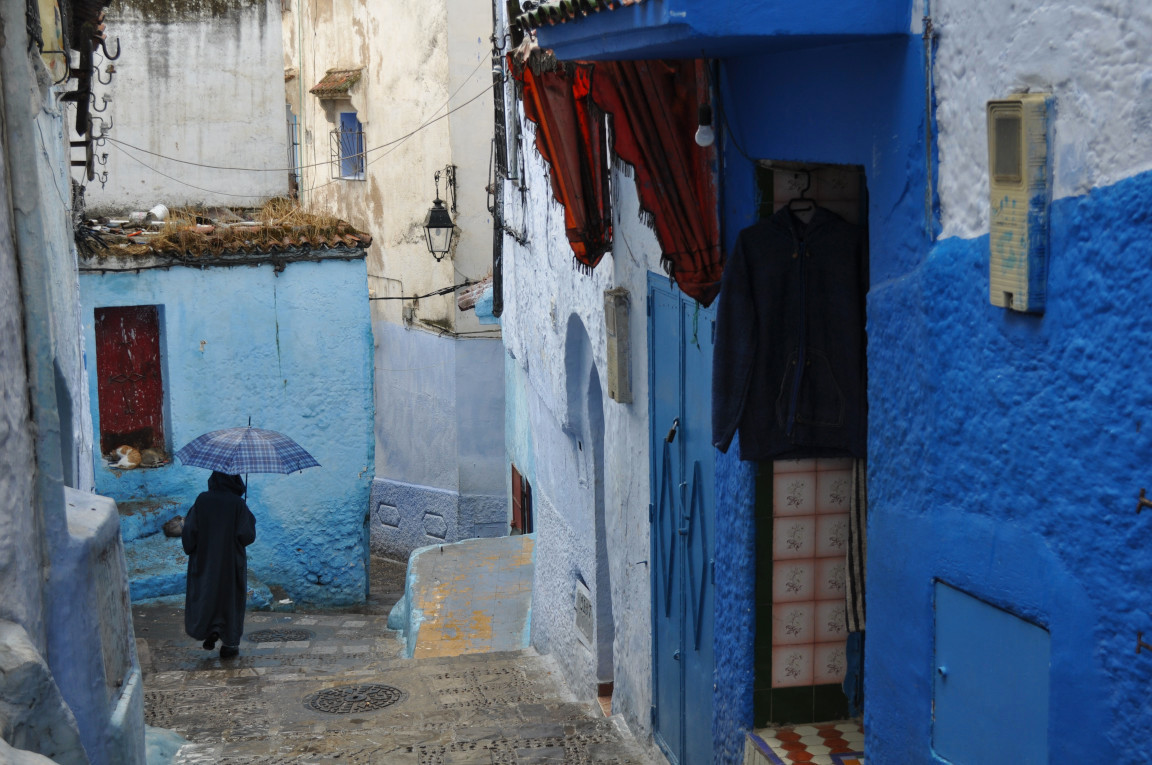👉 Italiano

My Cimitrul Vesel
No, Stray, really... Did you really take the train for over six hours to see a cemetery?
Yes, but those six hours are only for the first leg. It takes the same time to return. Plus, you know, it was also drizzling. And I knew it before. The visit, in fact, lasted about twenty minutes, since the site was not too big. But it was worth it. Because that's not a cemetery like the others.
That's Cimitrul Vesel, the Merry Cemetery.
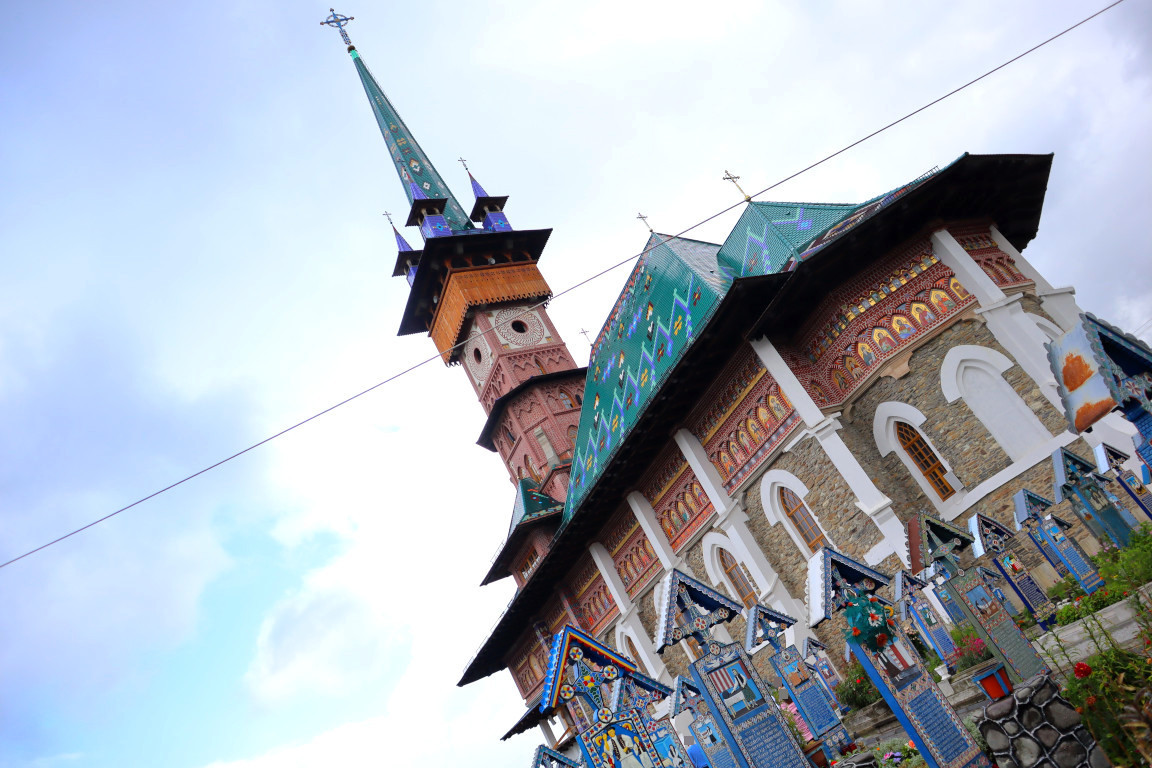
Which is located in the Maramureș region, in Romania. There is more to see in the surrounding area, for example the beautiful monasteries, such as that of Bârsana. But I don't want to fool anyone: I went there for the cemetery.
I took a train from Cluj to Sighetu Marmației. And I liked that too, although I later found that I would save some time on the bus. I saw the landscape slowly change, I was surprised when the train stopped at a station that is practically in the middle of the woods: Fiad. I tried, but I couldn't see an access road (there probably is one). There, the stationmaster and a couple of dogs. Basically a lighthouse keeper. And then I continued almost to the border with Ukraine, so close that at a certain point my smartphone hooked up to some antenna on the other side. I spent around 7 euros for a few seconds. So I also learned that I don't have to leave the automatic network choice in the settings. But beyond all this, I had in mind the next day's visit to the Cimitrul Vesel
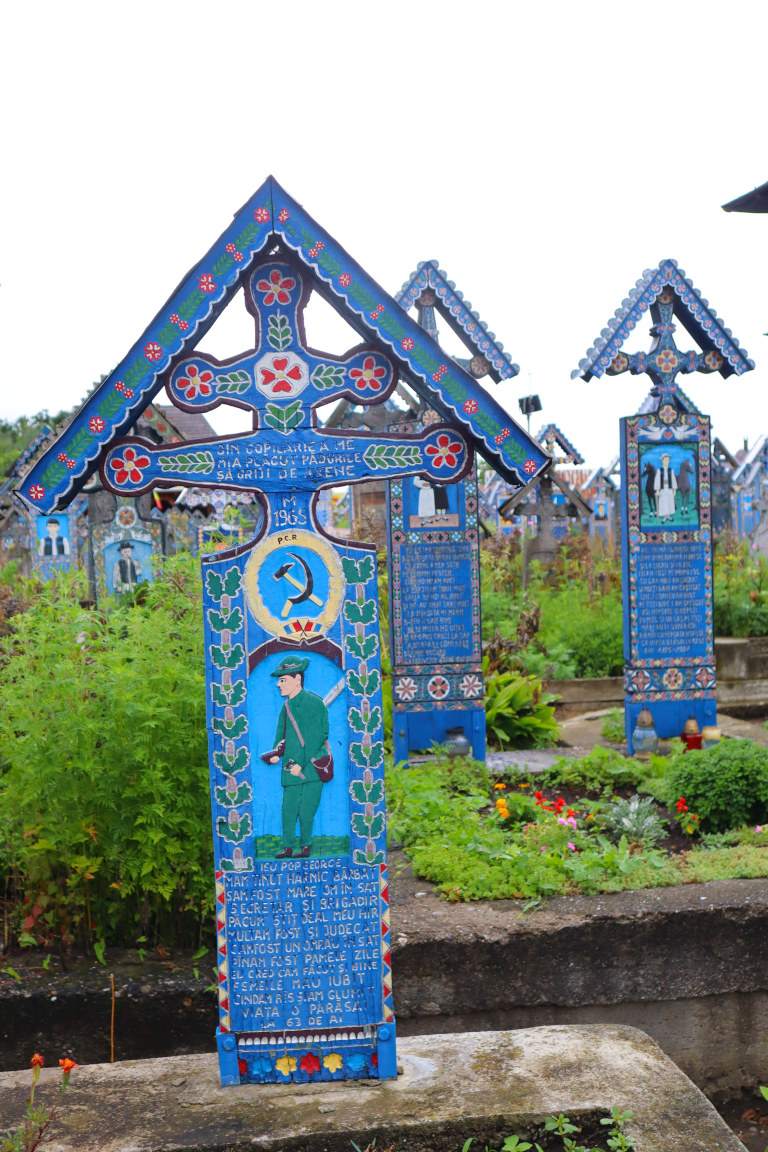
Why was I so interested in a cemetery? And why did they make a cemetery look merry? I had no guides that could explain, so I knew how much anyone could find from a quick online search. That is, the Cimitrul Vesel in Săpânța originated in the first half of the twentieth century, taking its cue from ancient traditions, which depicted death as a happy event. Because it would lead the deceased to a new life in the afterlife, better than the previous one. I also knew that the paintings and epitaphs are inspired by the lives of the deceased people, sometimes even with humorous type inscriptions.
Good. This is what I knew and still know today. What I didn't know, though, is that the best part of the visit came from knowing that I didn't know. I mean, now I know I didn't know that it's often better not to know. Why is this?
Because where knowledge ends, imagination takes over.
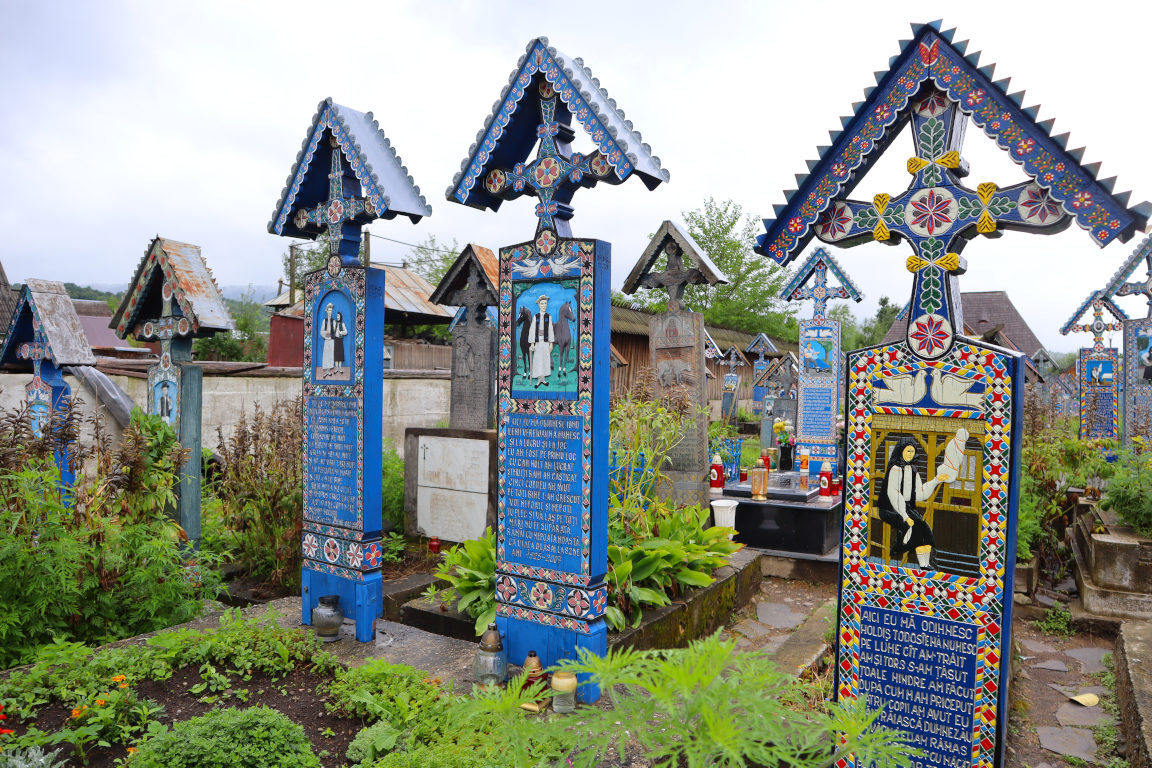
In this case, the imagination has received a lot of help from the language: Romanian is a neo-Latin language, although it has many Slavic influences. This means that, being Italian, I can guess some words by reading them. Everything else is compensated in an absolutely unpredictable way by the imagination. Especially when you have a painted tomb, with a sketched life scene.
In this way I was able to relive the existence of peasants, of busy family mothers, but also of professionals, office workers, soldiers and even be moved in front of the graves of children, often portrayed in their purest and most identifying moment: that of playing. And then there was the lady pictured near the Tour Eiffel. At that moment I thought that visiting Paris, or perhaps moving there, was her dream. My soul suggested me that she achieved it.
But my surprise was even greater when I realized that some of the tombs are not just painted on the front. They also have depictions and epitaphs on the back part. My impression was (this is not verified information) that on the front more space was given to the public characteristics of the person, for example the profession. But the back becomes more intimate, more introspective. People are no longer portrayed for what they do or for what they represent, but above all in pastimes, passions. That's where I let myself be carried away by emotions. In those tombs there is the total description of what existence is, of the fact that we often have a role, but that, after all, we are what we love. Thus, I become the employee who can't wait to walk with friends on a beautiful sunny day. I become the electrician who gets satisfaction from gardening. I become the elementary school teacher who delights in playing the violin in her spare time.
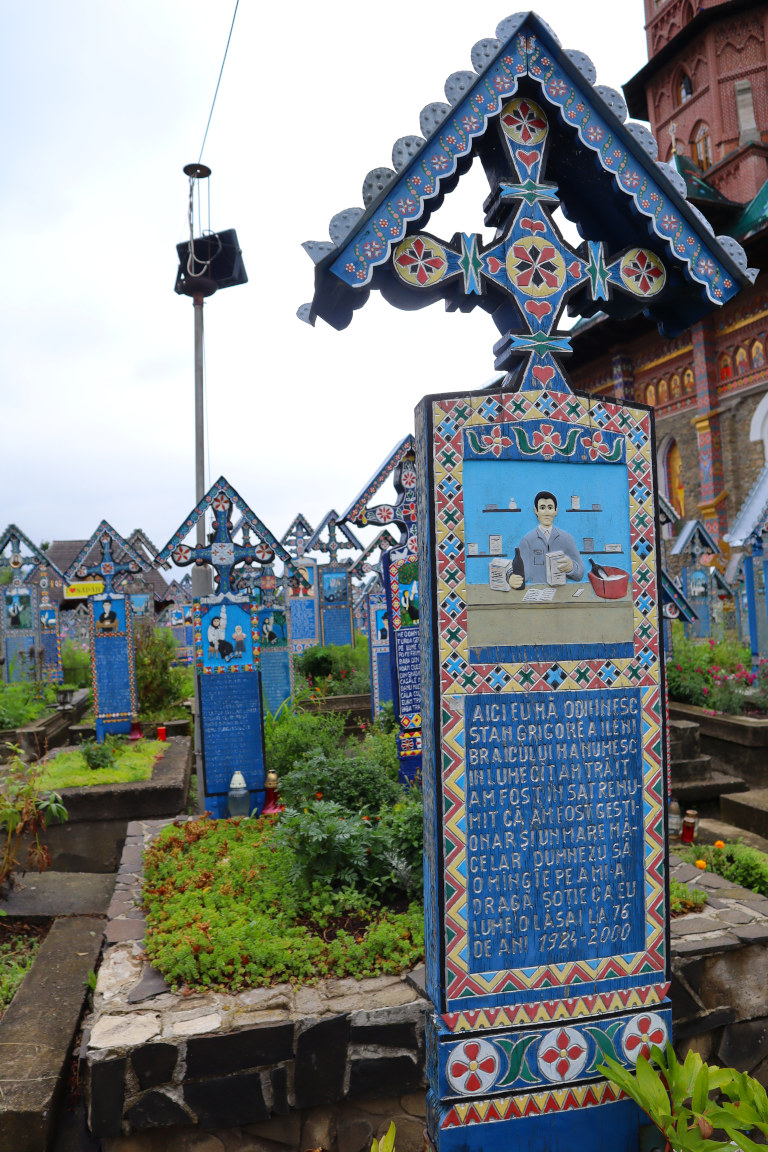
Is it really so? Or maybe I'm the violinist who teaches at school for a living? Or the gardener or (simply) the great friend of someone, who makes a living in some way?
Whatever the answer, these people have lived. I who look at them, I am living. I exist. Now and even after death. No, not in the sense of an afterlife. It is not my task to speculate on this topic. I speak simply of material existence. Even if the matter in my body will disintegrate and recombine somehow. Everything is in transformation.
The problem behind the perception of death is that in most cultures this is seen as an opposition to life. That is, if they asked me to tell the opposite of "high", I would say "low". And if they continued with the word "alive", without thinking too much I would say "dead". While actually I think it would be more correct to say "inanimate". Since, after all, death is not the antithesis to life, it is only its consequence.
Seen from this point of view, does a merry cemetery make more sense? Ultimately it celebrates a transition to a later stage, whatever it is. Cimitrul Vesel in Săpânța represents also an excellent opportunity for reinvigorating the memory of the deceased. It donates a sweet (perhaps sweetened) presentation even to those that the deceased never met while living.
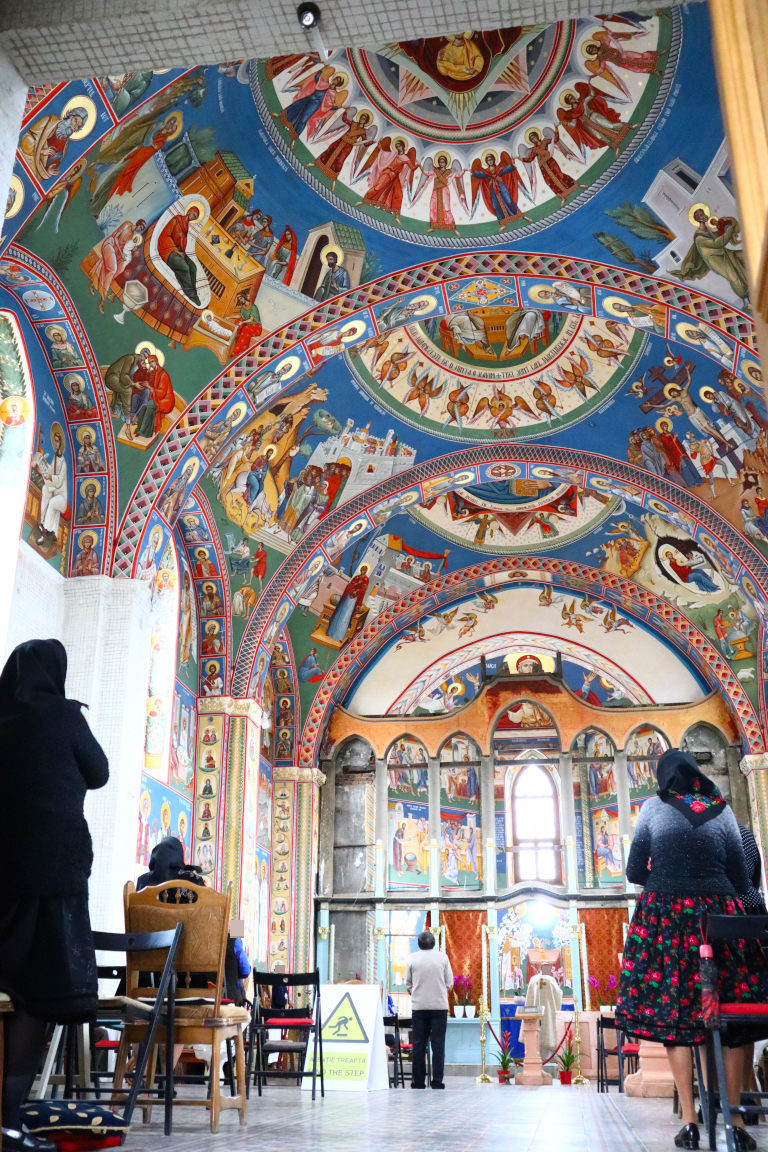
And in all of this, could I possibly forget to imagine my grave?
Tomb of Stray Idler at Cimitrul Vesel
Front - Image: Stray Idler in front of a screen, presumably in an office, typing something on a keyboard.
Front - Epitaph: Stray Idler was an office worker. Little to add.
Back - Image 1: Stray Idler is still in front of a screen, typing something on a keyboard. But this time his mind travels, creates his worlds, sometimes it's chained by them. Stray Idler is there only with his body.
Back - Image 2: And then there's a second scene, where Stray Idler is really traveling. There is a jumble of structures, from the Pyramids to Kiyomizu-dera, but also lakes, seas, mountains, sandy and salty deserts.
Back - Epitaph: Old or young, Stray continually travels through his memories and the words he wrote. Even in death.
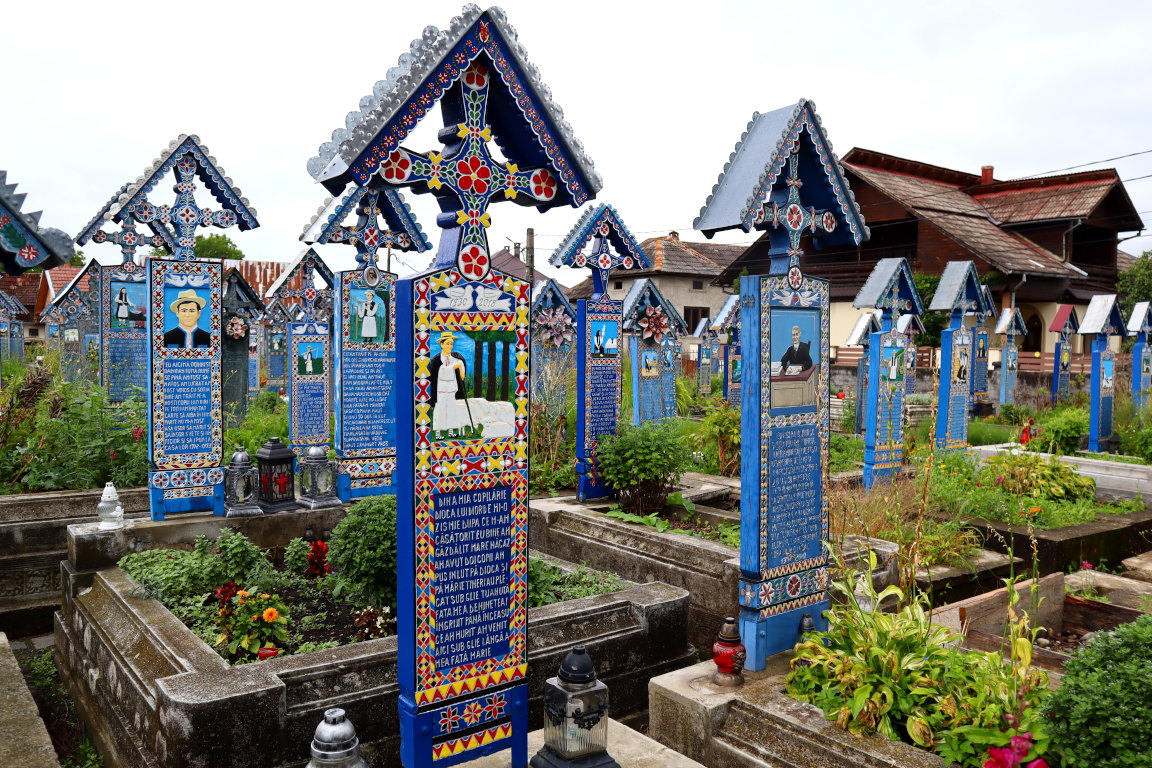
Negli spazi vuoti, mi attendo versetti ironici da parte di tutti i miei amici. Dateci dentro, ragazzi!
You might also like:
